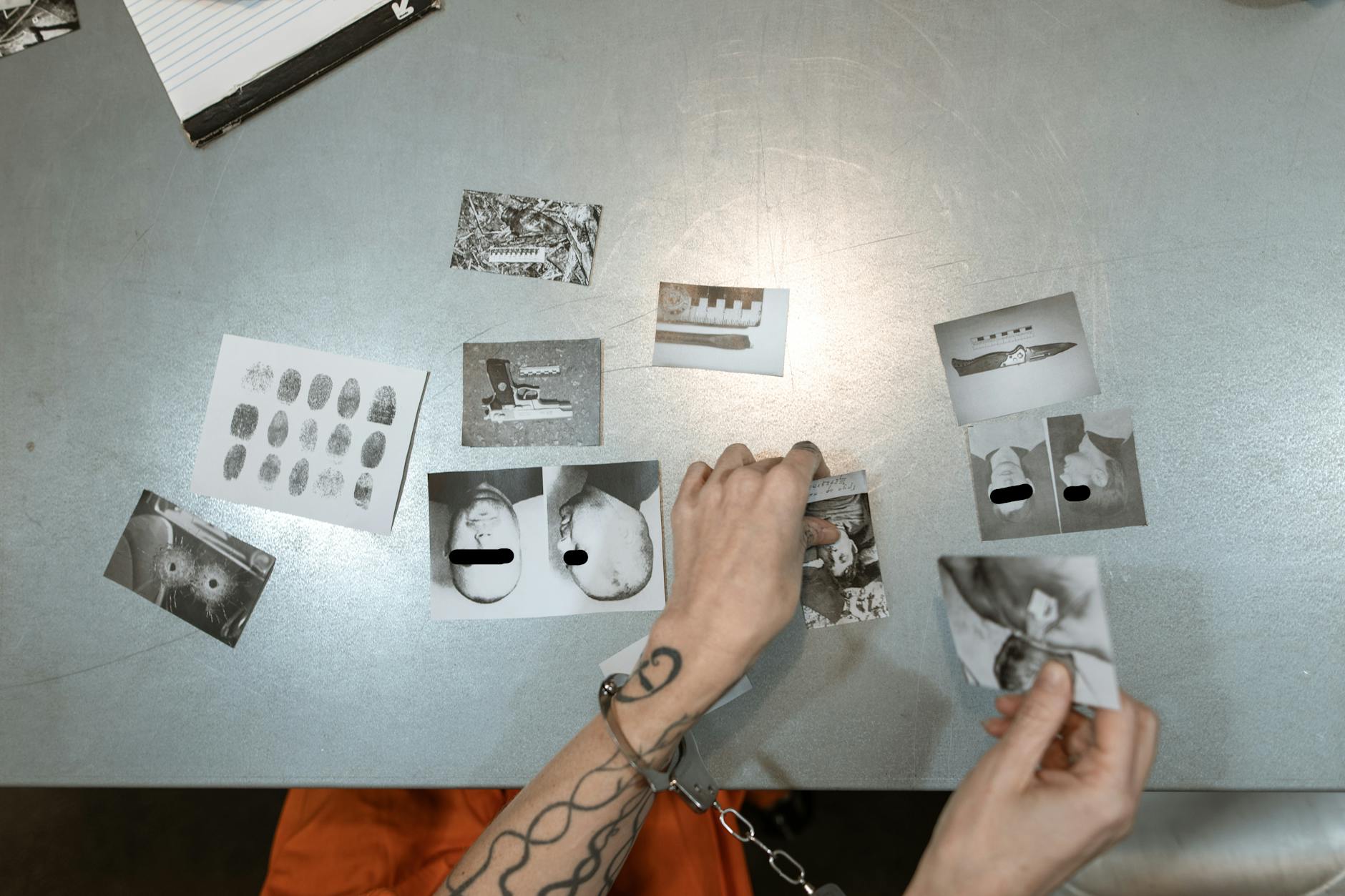Some folks spin wild tales at campfires. Others do it in the boardroom and somehow walk out with millions. Welcome to a world where bluffing isn’t just for poker tables—it’s in pitch decks, product demos, and startup launch parties.
These five companies took “fake it till you make it” to new heights. They tumbled and stumbled, sometimes dancing a little too close to disaster, but still managed to snag jaw-dropping wins.
In this Hall of Fame, you’ll meet the boldest hustlers, wily storytellers, and risk-takers who turned high-stakes fibs into wild success stories. It's a wild ride, so buckle up—the line between gutsy and shady has never looked so thin.
Theranos: The Science Project That Fooled Silicon Valley
The Theranos story reads like an epic drama with gadget-filled labs, bold promises, and a star at the center wearing a black turtleneck. Elizabeth Holmes didn’t just sell a product—she sold an idea everyone wanted to believe. Flashy investors, glowing headlines, and iron-clad NDAs hid the mess bubbling under the surface. When the smoke cleared, the whole show looked more like a magic trick gone wrong than a medical revolution.
Magic of the Mini-Lab: Smoke and Mirrors in the Lab
Holmes strutted onto the tech stage as the next Steve Jobs, decked out in her signature turtleneck, and pitched a tiny box that promised to run hundreds of blood tests from a single drop. With dreamy charm and a stare that could outlast a statue, she convinced heavy hitters on Wall Street and Capitol Hill.
But the magical “Edison” box was more hype than hardware. Behind closed doors, the machines gave sketchy results on anything tougher than a pregnancy test. Staff whispered, “This thing doesn’t work.” Yet, the company doubled down on secrecy.
A few reasons why no one noticed the cracks for so long:
-
Big money, big egos: From Henry Kissinger to Rupert Murdoch, big names kept betting their fortunes and reputations.
-
The Silicon Valley hustle: Legendary VCs and board members wanted in early, even if questions about the science never got real answers.
-
Obsession with secrecy: Staff couldn’t talk shop with anyone. Even engineers fixing the machine didn’t see the whole picture.
-
Slick marketing: The buzz was so loud that even Walgreens jumped in, launching Theranos labs in stores before the science caught up.
It all felt like a glossy sci-fi trailer—with the endings left out.
Want a closer look at the slick pitch and how Theranos sold the dream with faulty tech?
When The Truth Breaks Out
Every magic act has a moment when the trick goes wrong. At Theranos, that moment came crashing in with erratic test results, nervous whistleblowers, and a growing chorus of questions no NDA could silence. Former staff started blowing the whistle. John Carreyrou, a dogged reporter at The Wall Street Journal, revealed the company’s tests rarely worked as promised. Walgreens yanked their partnership.
As the press circled, federal prosecutors stepped in. Elizabeth Holmes and her sidekick Sunny Balwani faced charges for fraud. Investors who had once gushed about her “vision” called their lawyers instead. Real patients worried they’d made medical choices based on made-up numbers.
Key signs the house of cards came tumbling down:
-
Whistleblower tales: Insiders finally spoke out, risking lawsuits to expose the cracks.
-
Regulatory slap-downs: Federal agencies flagged Theranos for shoddy science and unsafe practices.
-
Public spectacle: The trial turned Holmes into the face of startup make-believe, and her sentence was a warning to flashier founders everywhere.
Those who want the full behind-the-scenes can peek at this timeline of the Theranos scandal. For the official record, even the U.S. Department of Justice has weighed in on Holmes’ sentencing.

Photo by RDNE Stock project
WeWork: The Office Party That Sold a Vision
The WeWork legend isn’t just about glass-walled offices or sleek co-working spaces—it’s about pumping up energy until even the quietest workday buzzed like a festival. Adam Neumann didn’t just pitch meeting rooms, he threw full-blown parties and called it “changing the world.” For a hot minute, the story sold Wall Street, Silicon Valley, and just about anyone with a laptop and a latte.

Photo by World Sikh Organization of Canada
Building The Cult of We: Kombucha on Tap, Brotherhood in the Air
Picture this: open-plan floors with neon signs, free-flowing kombucha, and communal tables where strangers traded startup gossip. Adam Neumann, the long-haired, barefoot chief, didn’t just create office spaces—he sprinkled a dose of summer camp on top.
It went far beyond desk rentals. WeWork pushed a party-hard, live-work-play lifestyle with these crowd-pleasers:
-
Kombucha taps at every corner: More bubbly tea than you could drink, fueling spontaneous brainstorms and after-hours chats.
-
Weekly happy hours: Beer, music, and even live DJs turned “networking” into clubbing.
-
Members-only events: Think yoga at sunrise, motivational speakers by lunch, and speed dating for business founders after work.
-
WeLive and co-living spaces: Neumann’s ambition didn’t stop at offices. He imagined entire apartment buildings run like WeWork—everyone part of the “We” movement twenty-four/seven.
Neumann’s personal brand became the secret sauce. He paraded charisma, spoke in sound bites about “elevating the world’s consciousness,” and had a knack for turning regular renters into fanatics. Staff painted the cult-following vibe in interviews, while media profiles described the company as running on pure adrenaline. A deep dive from Forbes calls it a “$20 billion office party”—which is only a little bit of an exaggeration (Forbes: WeWork’s $20 Billion Office Party).
For a few wild years, it felt like he’d convinced thousands that going to work was about belonging to something much bigger than a paycheck.
IPO Meltdown: When the Curtain Fell
The party couldn’t last forever. All that hype, all that energy—eventually the music stopped. WeWork’s story took a sharp turn in 2019 when it filed for its long-awaited IPO. Investors had caught the fever, believing that if WeWork said it was a tech company, it must have magic margins hiding somewhere.
Then the prospectus landed, and suddenly, the lights snapped on:
-
WeWork lost billions each year, burning cash at a speed that would make even experienced gamblers nervous.
-
Adam Neumann’s expensive tastes—like buying wave pools, Gulfstream jets, and even trademarking the word “We”—looked odd.
-
The company’s numbers didn’t match up. Profits? Nowhere in sight. Growth? Built on deep discounts and wild over-promising.
-
Disclosures revealed Neumann’s tangled deals, including leasing buildings to WeWork and cashing out long before anyone else.
Media outlets pounced, digging up weird details and raising eyebrows at Neumann’s leadership style. Vanity Fair described the scene as a “capitalist kibbutz” gone sideways (Vanity Fair: Inside the Fall of WeWork). Wall Street recoiled. The IPO was pulled.
In weeks, WeWork’s valuation dropped from $47 billion to nearly nothing. Neumann exited with a massive payout, while staff faced layoffs and investors muttered about due diligence. For a full rundown on what triggered the downfall, check this deep dive into the WeWork IPO failure.
The WeWork saga proved you can hype belonging and purpose, throw a killer office party, but eventually, math gets the last word.
Volkswagen: Diesel Dreams and Deception
Volkswagen didn’t just sell cars—they promised drivers a green ticket to the future, blending German engineering with planet-friendly diesel. As ad campaigns cranked out images of wide-open roads and clean skies, no one guessed that VW was writing one of the boldest chapters in corporate bluff history. What looked like eco-innovation turned out to be a calculated trick, using code, sensors, and a lot of nerve to pass the world’s toughest smog checks.
Engineering a Clean Image—and Dirty Engines

Photo by Daniel Andraski
Volkswagen’s diesel engines rolled off assembly lines with a secret. These cars came loaded with “defeat device” software smart enough to sense when regulators were testing for emissions. Here’s how it worked:
-
The car “knew” when it was being tested by recognizing lab driving patterns.
-
During tests, the engine dialed down pollution—meeting strict standards.
-
On the open road, the software switched modes, letting engines belch out up to 40 times the legal nitrogen oxide limits.
It was like wearing a suit and tie to pass the interview, then ripping it off to lounge in pajamas at work. For years, VW kept regulators, drivers, and even its own sales teams in the dark. At its boldest, the company claimed its diesels were the cleanest around, outshining hybrids and dazzling eco-conscious consumers across Europe and America.
For those curious about the nitty-gritty tech behind this giant fib, check out a breakdown on how Volkswagen tricked emissions tests and fooled regulators around the world.
The Price Of Getting Caught
The VW diesel drama bust became global news in 2015 when U.S. authorities pulled back the curtain. Overnight, the brand’s happy-go-lucky image turned into late-night-talk-show punchlines. The fallout was huge:
-
Over 11 million cars trapped in the lie, stretching from California highways to tiny European towns.
-
Volkswagen faced a storm of lawsuits, buybacks, and criminal charges in multiple countries.
-
The U.S. government slapped VW with a record-breaking settlement, reaching up to $14.7 billion.
-
Executives scrambled, as top leaders resigned and some faced criminal prosecution.
Trust took a nosedive. Diesel sales tanked. Even lifelong Volkswagen fans started looking elsewhere for honest wheels. The scandal forced the company to overhaul its entire playbook, pouring cash into electric cars, rewriting its code of conduct, and launching splashy ad campaigns to win back drivers.
For a full rundown on the details, check this Volkswagen scandal explained. Want the regulatory scoop? Read the EPA’s official summary of Volkswagen violations.
VW’s sorry song became a reminder: When big promises hide bigger secrets, the fallout can stomp on even the flashiest brands.
Peloton: Spinning Hype Into a Fitness Fad
Peloton started as a pricey stationary bike with a screen, but it quickly became a badge of luxury fitness. Slick commercials, celebrity shoutouts, and a community vibe helped it explode in popularity. By 2020, everyone seemed glued to their living rooms, peddling away and chasing studio sweat without leaving home. What looked unstoppable turned out to be a classic case of hype racing ahead of reality.
Pedaling Up The Hype Hill: Deliver on big promises, viral ads, and soaring valuation—even before profits appeared.
 Photo by Juan Manuel Montejano Lopez
Photo by Juan Manuel Montejano Lopez
Peloton didn’t just sell a bike—it sold community, celebrity, and the thrill of competition, all with a subscription price tag. The ad campaigns showed fit trainers shouting upbeat encouragement, lush apartments, and everyday folks beaming with post-spin euphoria. The company leaned into viral marketing, turning home fitness into a badge of honor.
-
The promise: Workout classes “anytime, anywhere,” access to superstar instructors, and a chance to compete with thousands of riders.
-
Status symbol: A Peloton bike in the background of a Zoom call became a signal you’d “made it”—especially when going out meant facing a pandemic.
-
Valuation madness: Investors jumped in. At the height of pandemic lockdowns, Peloton’s value hit $50 billion, and its stock soared to $171 a share, despite the company never posting major profits.
For a brief, wild window, Peloton was the toast of Wall Street and living rooms everywhere. Even non-riders could name their favorite instructors. The hype train was full steam ahead, with projections and buzz running hot. See more on the Peloton stock frenzy during the pandemic and how it became a pandemic-era success story.
Reality Check Cycled In: Address shrinking demand, layoffs, and the stock plunge after the boom faded.
As gyms reopened and life crawled back to normal, Peloton’s magic wore off. Demand for at-home fitness gear dropped sharply. Suddenly, the company had too many bikes, too few buyers, and a warehouse full of regrets.
-
Falling sales: The waiting lists vanished. Inventory stacked up and price cuts weren’t enough.
-
Big layoffs: Peloton slashed thousands of jobs, trimming costs while trying to spark growth. By 2022, more than 5,000 staff were out the door.
-
Staggering stock drop: The share price crashed almost 80% from its highs, leaving investors wondering if they’d ridden the hype off a cliff.
In the media, headlines painted a picture of a once-hot company struggling with reality. Peloton scrambled to fix its supply chain, refresh its brand, and pitch new products—but the pandemic glow was gone. To get the full story, check out this detailed look at Peloton’s rise and fall and see how a post-pandemic slump hit the bottom line.
In the end, Peloton is a case study in what can happen when hype pedals faster than profits. The spinclass is over, and all that’s left is the sound of unsold bikes gathering dust.
Apple: The Origin Story That Outgrew The Myth
Apple’s tale stands out as one of the most colorful—and yes, cheeky—stories in business. The company’s rise from a dusty garage in California to the world’s most valuable brand wasn’t just about brilliant code and clever design. It was about two young rebels, a wild streak of confidence, and a knack for pitching dreams as if they’d already come true. The real magic? They made people believe it.
Garage Tales and Creative Exaggeration: Tell how they spun their first product pitch, and finessed history to craft Apple’s rebel brand.
Picture it: a cramped garage, tangled wires, parts scavenged from anywhere, and a grinning Steve Jobs ready to sell anyone on his dream. Most garage startups stay in the garage. Apple, thanks to some creative storytelling—and just a bit of puffery—soared out faster than a caffeine-fueled coder.
Before Apple had a product, Jobs spun a story. When he and Steve Wozniak wanted to build their first computer, the Apple I, they didn’t wait until it was finished to find a buyer. Jobs convinced a local computer shop, The Byte Shop, to pre-purchase 50 units, promising his handmade machines were ready for primetime. (Spoiler: They’d barely finished the prototype.) Wozniak scrambled, assembling computers in Jobs’ parents’ garage while Jobs sweet-talked suppliers into floating them parts—telling each one that Apple’s computers were in high demand. That first order, which they raced to fill by hand, gave Apple enough cash and street cred to keep growing.
Jobs’ secret weapon? Confidence that bordered on audacity. If he didn’t have it, he said he did. If the product wasn’t ready, he’d smile and say it was. Their scrappy beginnings and clever spins became the foundation of Apple’s brand—part underdog, part rockstar. Here’s a great rundown of the real Apple garage myths and moves.
And let’s not forget the way Jobs and Wozniak tweaked their own story for the history books. The “two guys in a garage” narrative is true—but it’s also carefully curated. In reality, Apple got a big early boost from friends and backers who saw through the bravado and liked what they saw. Still, Apple’s story became a legend, and the world ate it up. Take a trip through Apple’s founding and those early tall tales for proof that mythmaking and salesmanship were Apple’s first products.
From Tall Tales To Tech Titans: Finish with how real innovation followed, and how storytelling gave Apple a launchpad.
After the garage victory lap, Apple moved beyond tall tales and started delivering the goods. The Apple II wasn’t just hype—it changed what a personal computer could be. Overnight, Apple went from a scrappy shop to a Silicon Valley sensation, drawing real fans and real cash. But that old habit of telling a story never went away.
Jobs—master of the “reality distortion field”—knew how to turn every product launch into a must-see event. When the Macintosh debuted, he choreographed the reveal like a rock concert. Later, the iPod, iPhone, and iPad each got their own moment in the spotlight, each event bigger and bolder than the last.
A few ways storytelling powered Apple’s leap from garageland to giant:
-
Building hype before anything existed: Jobs always knew how to tease.
-
Using everyday language: Apple’s ads made computers look like approachable, even friendly pals—not scary machines.
-
Selling a vibe, not just specs: Owning an Apple meant joining a club—even before it was cool.
-
Creating anticipation: Each keynote felt like a holiday, with fans guessing about the “one more thing.”


![The ‘Fake It Till You Make It’ Hall of Fame: 5 Companies That Turned Bold Bluffing Into Big Wins [2025 Edition]](http://www.newonlinelife.com/cdn/shop/articles/peachfuzz5000_Visitors_in_business_attire_looking_impressed_a_0_e242af8d-b70d-4d37-b562-836f3cb261ca.png?v=1757806522&width=1100)
 Photo by
Photo by